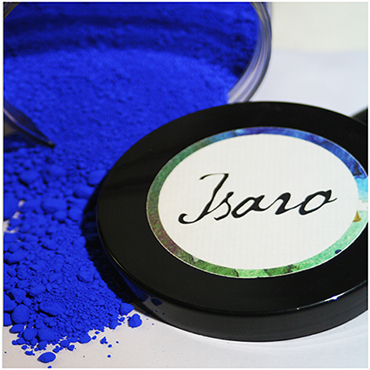The little story of artificial ultramarine blue

The lapis lazuli gave a magnificent blue but of an excessive cost. Tedious work was necessary to extract this very pure blue from a semi-precious stone. At the beginning of the 19th century, an analysis of lapis lazuli demonstrated the presence of a large amount of sodium. And in 1814, the chemist Tassaert observed a blue matter which formed on the walls of soda ovens. Analysis of this deposit showed a great similarity between this material and the natural overseas. These discoveries gave hope that one could artificially recreate a pigment close to the precious lapis lazuli.
In France, the company encouraging the national industry offered a price of 6000 gold francs to the one who would arrive first to manufacture artificial oversea.
It was Jean-Baptiste Guimet who won this prize thanks to his process of synthesizing overseas.
Produced in 1830 industrially, this new blue will quickly dethrone natural lapis lazuli at a very lower cost price.
This magnificent blue quickly found many outlets, especially to brighten up paper and linen. In the graphic arts this pigment was also very appreciated by the artists.
Overseas exists in several shades. If blue is the best known and most used pigment, it is also available in purple and pink.